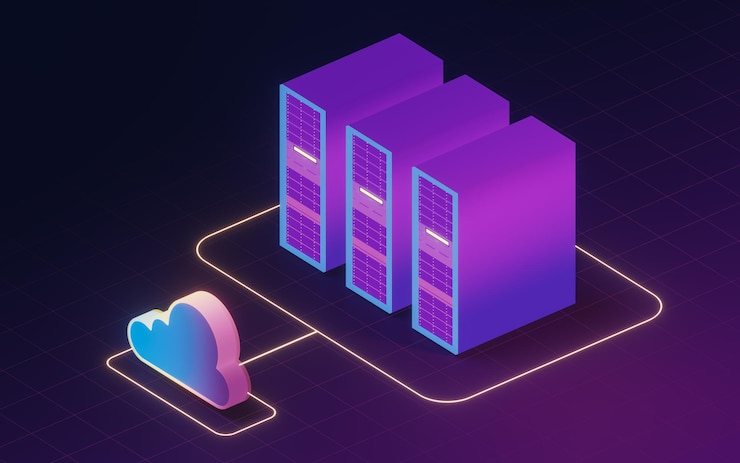How to Set Up a CI Server on a VPS for Efficient Software Development
In today’s fast-paced software development landscape, Continuous Integration (CI) has become a cornerstone for delivering high-quality code efficiently. For developers, setting up a CI server on a VPS (Virtual Private Server) offers scalability, flexibility, and control. This article dives deep into the process of configuring a CI server on a VPS, tailored for developers seeking to optimize their workflow.
The Role of Continuous Integration in Modern Development
Continuous Integration (CI) is a development practice where developers frequently integrate their code changes into a shared repository. Each integration is then automatically verified by an automated build and test process. The primary goal of CI is to detect issues early and ensure that the codebase remains stable and functional.
A CI server acts as the backbone of this process, orchestrating the automation of builds, tests, and deployments. By leveraging a VPS, developers can gain the flexibility to customize their CI environment, control resource allocation, and scale as needed.
Here are some key benefits of using a VPS for setting up a CI server:
- Customization: Developers have full control over the software stack and configurations.
- Scalability: VPS resources can be easily scaled to accommodate growing project needs.
- Security: Isolated environments provide enhanced security compared to shared hosting.
- Cost-Effectiveness: Pay for only the resources you need, without unnecessary overhead.
Choosing the Right VPS for Your CI Server
Selecting the right VPS is crucial for ensuring smooth and efficient CI operations. The choice of VPS depends on factors such as project size, expected traffic, and budget. Here’s a breakdown of what to consider:
1. Performance and Resources
A CI server requires adequate processing power, memory, and storage to handle builds, run tests, and manage dependencies. For smaller projects, a VPS with 2-4 cores, 4-8 GB of RAM, and 50-100 GB of storage should suffice. Larger projects may need more resources, so scalability and the ability to upgrade are important.
2. Operating System
The choice of operating system (OS) depends on the tools and technologies used in your development stack. Popular options include:
- Linux: Widely used in CI environments due to its stability and extensive tooling support. Distributions like Ubuntu, CentOS, and Debian are common choices.
- Windows: Necessary if your CI pipeline involves Windows-specific technologies or applications.
3. Provider Reliability and Support
Choose a reputable VPS provider with a track record of reliability and robust customer support. Look for features like uptime guarantees, DDoS protection, and 24/7 technical support. Providers like DigitalOcean, Linode, and AWS Lightsail offer reliable VPS solutions tailored for developers.
4. Networking and Connectivity
Fast and stable internet connectivity is essential for CI servers, as frequent code pushes and automated builds require low-latency communication. Opt for a VPS located in a data center with excellent network performance and redundancy.
Setting Up Your VPS for Continuous Integration
Once you’ve chosen the right VPS, it’s time to configure it for your CI needs. This section walks you through the essential steps to set up and optimize your VPS for Continuous Integration.
1. Initial Server Setup
After provisioning your VPS, the first step is to secure and configure the server. This typically involves:
- Updating the OS: Run package updates to ensure all system components are up to date.
- Setting up a non-root user: Create a user with sudo privileges to enhance security.
- Configuring SSH Access: Disable root login and use SSH keys for secure access.
- Firewall Setup: Enable a firewall (e.g., UFW on Ubuntu) to restrict access to essential ports.
2. Installing Required Software
A CI server relies on a suite of tools to automate builds, tests, and deployments. Commonly used tools include:
- Git: For version control and code repository management.
- Docker: For containerized builds and environments.
- Jenkins: A popular open-source CI server.
- Node.js/npm: For JavaScript-based projects.
- Python/pip: For Python-based projects.
Install these tools using package managers (e.g., APT for Debian/Ubuntu, YUM for CentOS) or by following the official installation guides.
3. Configuring the CI Server
With the necessary software installed, configure your CI server to automate the CI/CD pipeline. Here’s a step-by-step guide:
- Set Up Jenkins:
- Install Jenkins using the official installation guide.
- Access the Jenkins web interface and follow the setup wizard.
- Install recommended plugins and any additional plugins specific to your project.
- Create a Jenkins Job:
- Define a new job in Jenkins to handle your CI pipeline.
- Configure source code management (e.g., Git repository) and specify branches to monitor.
- Set up build triggers (e.g., on code push or scheduled intervals).
- Automate Builds and Tests:
- Write build scripts (e.g., shell scripts or Dockerfiles) to compile and package your application.
- Integrate test frameworks (e.g., JUnit, pytest) to automate unit and integration tests.
- Deployments:
- Set up deployment scripts to push builds to staging or production environments.
- Use tools like Ansible, Docker, or Kubernetes for automated deployments.
4. Monitoring and Maintenance
Once your CI server is up and running, regular monitoring and maintenance are essential to ensure smooth operation:
- Log Monitoring: Use tools like ELK Stack (Elasticsearch, Logstash, Kibana) or Grafana to monitor logs and metrics.
- Backup and Restore: Regularly back up your CI configurations and artifacts to prevent data loss.
- Performance Optimization: Adjust resource allocations and tune configurations to optimize performance.
Best Practices for CI Server on a VPS
To maximize the efficiency and reliability of your CI server on a VPS, follow these best practices:
1. Automate Everything
Automation is at the core of CI. Automate repetitive tasks such as code builds, tests, and deployments to minimize human errors and streamline the workflow.
2. Use Version Control
Integrate version control systems like Git into your CI pipeline to track changes, manage branches, and facilitate collaboration.
3. Implement Continuous Testing
Incorporate a robust testing strategy that includes unit tests, integration tests, and end-to-end tests to ensure code quality and detect issues early.
4. Monitor and Collect Metrics
Use monitoring tools to collect and analyze metrics such as build times, test coverage, and error rates. This data helps identify bottlenecks and optimize performance.
5. Security Best Practices
Secure your CI server by:
- Using strong, unique passwords for all












